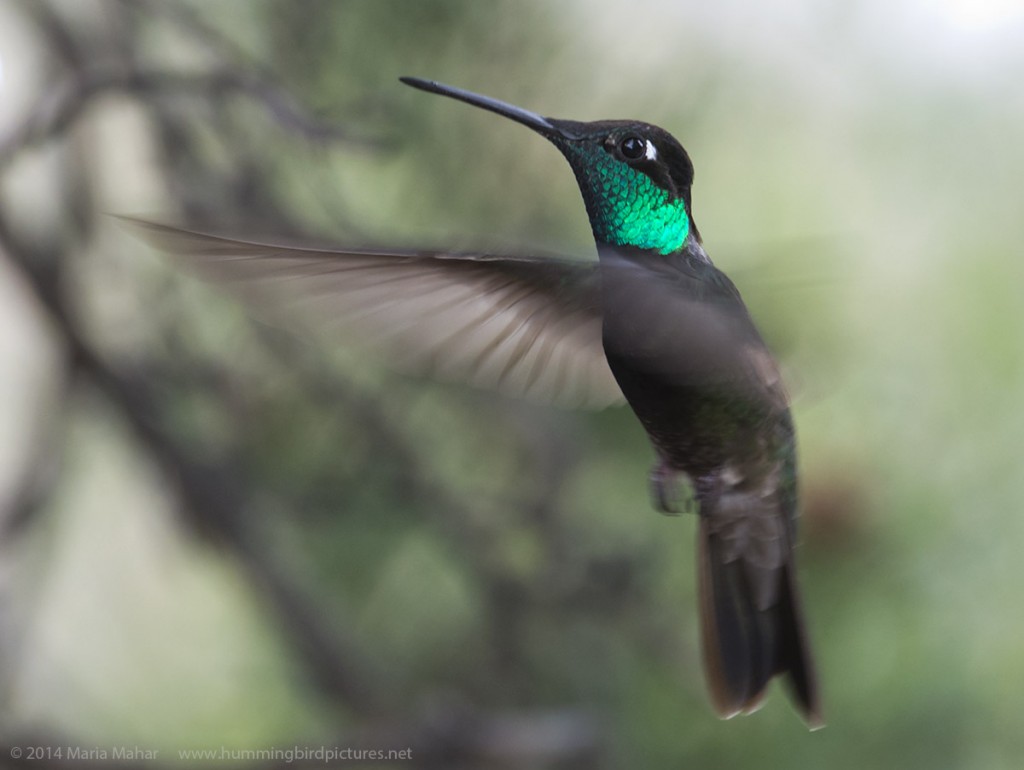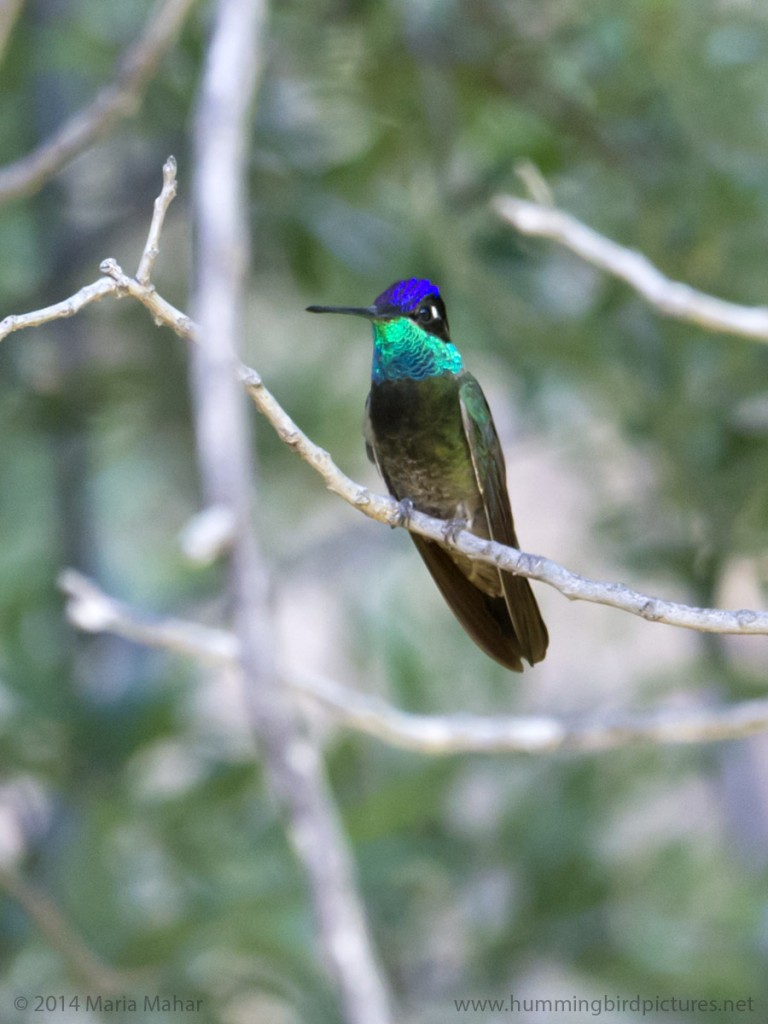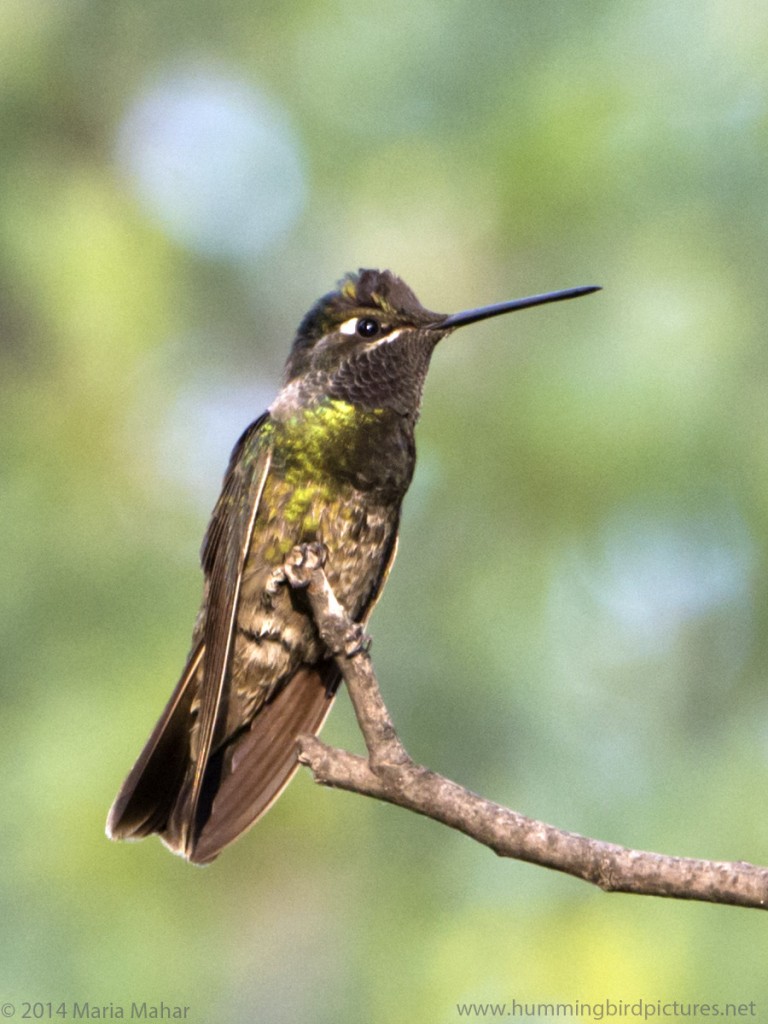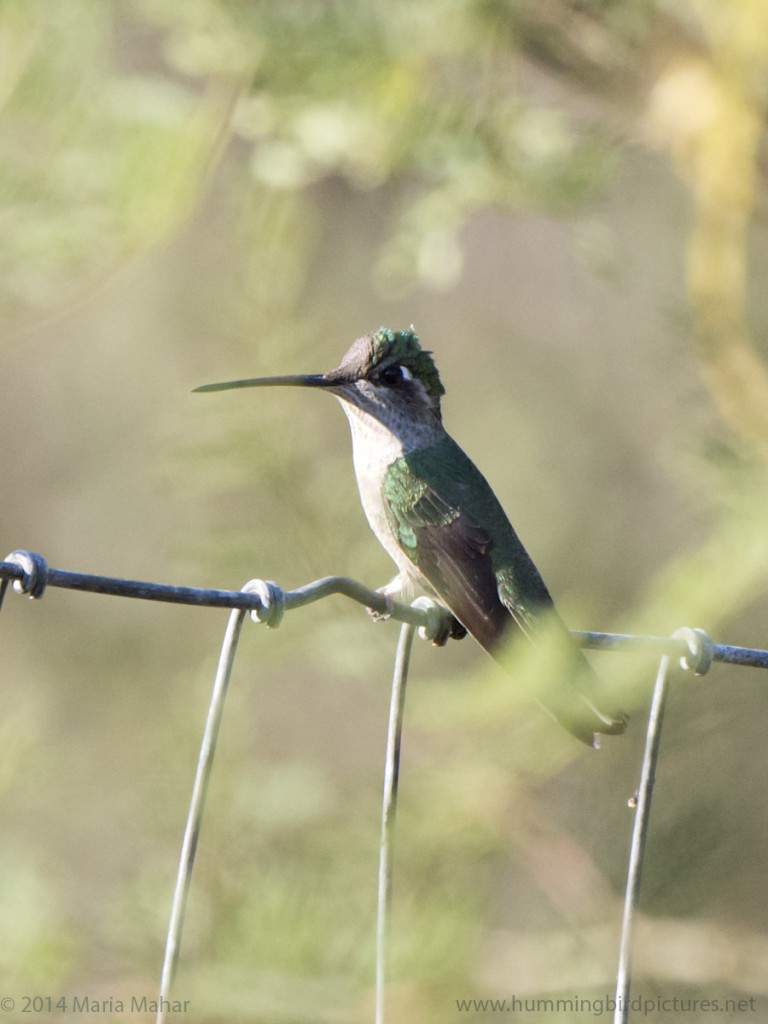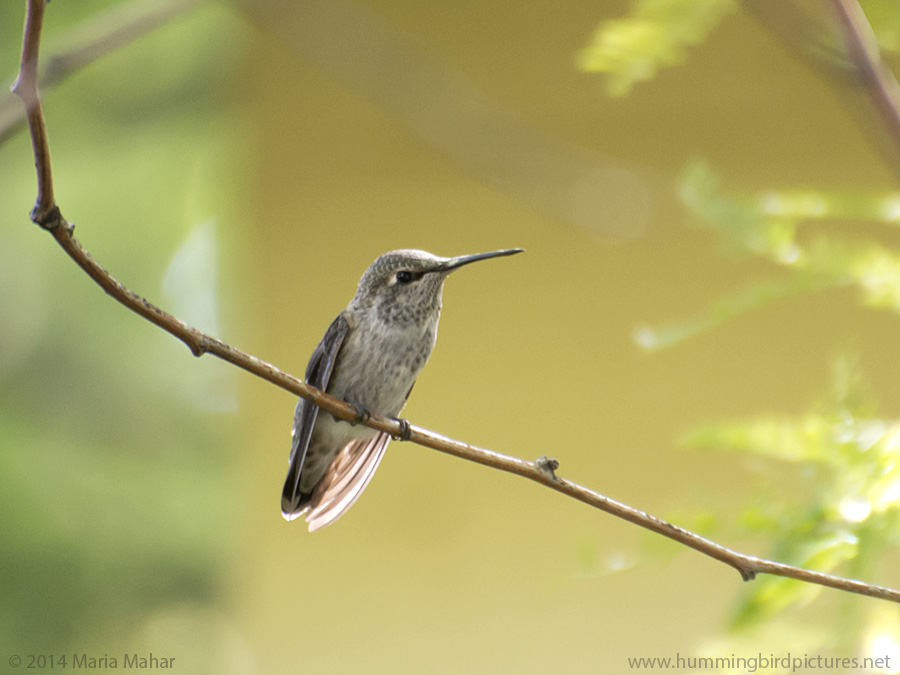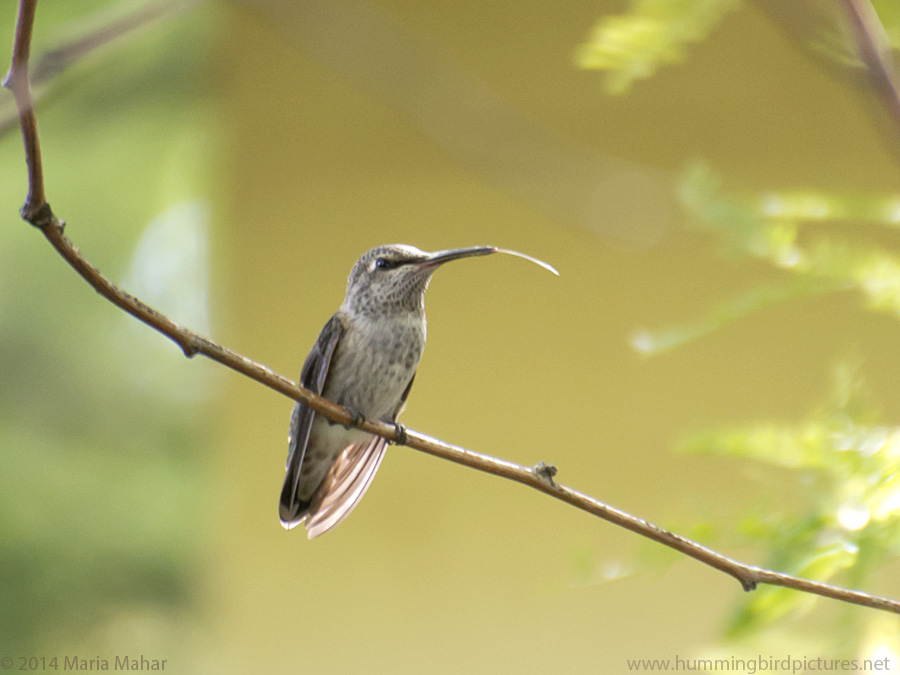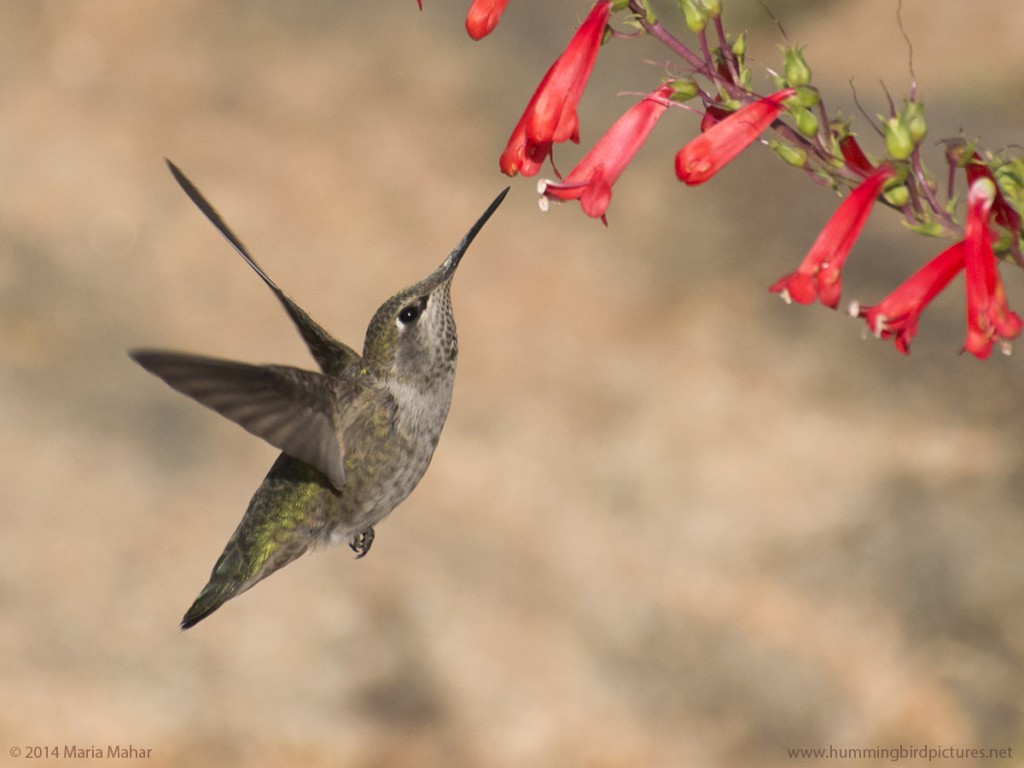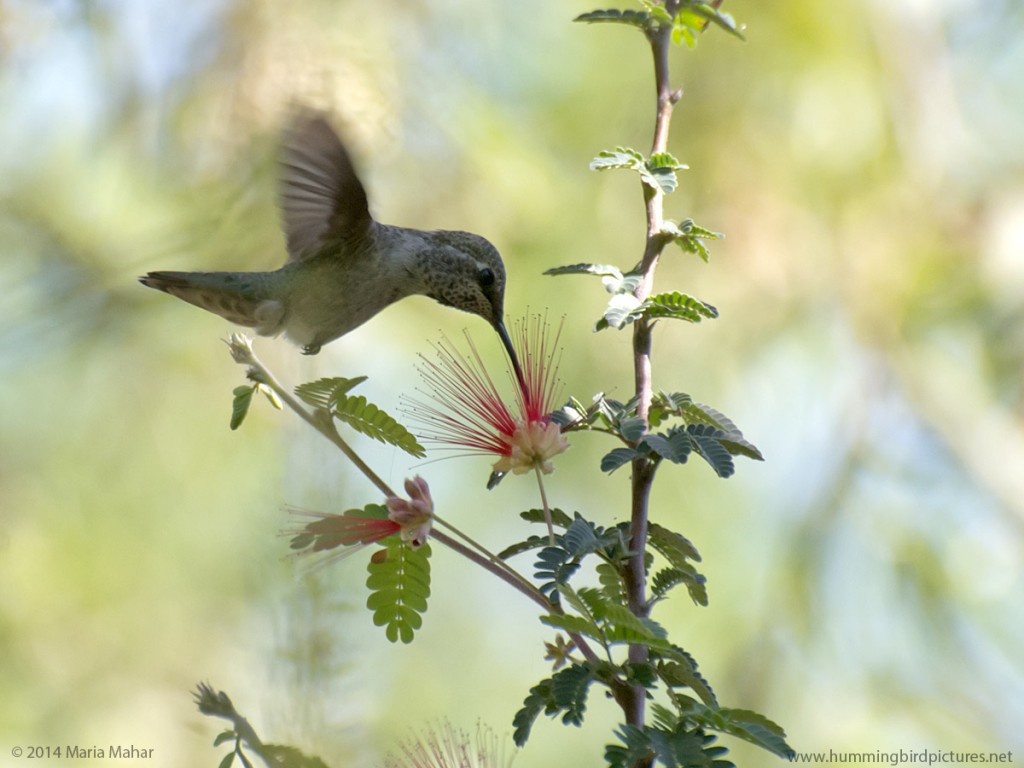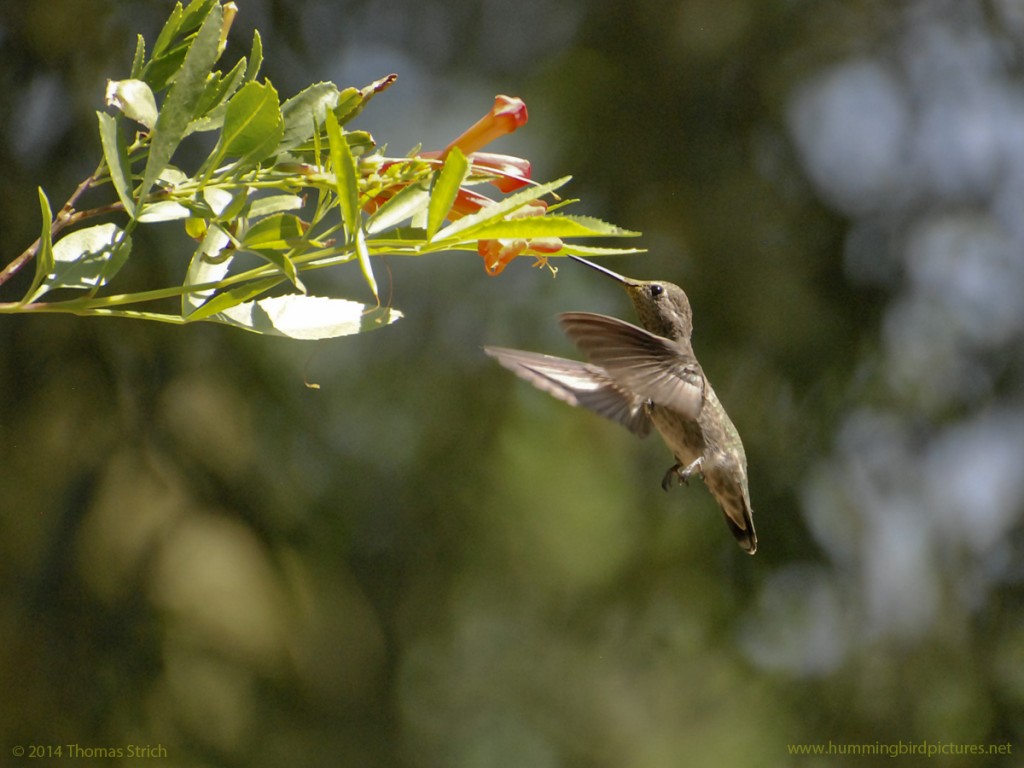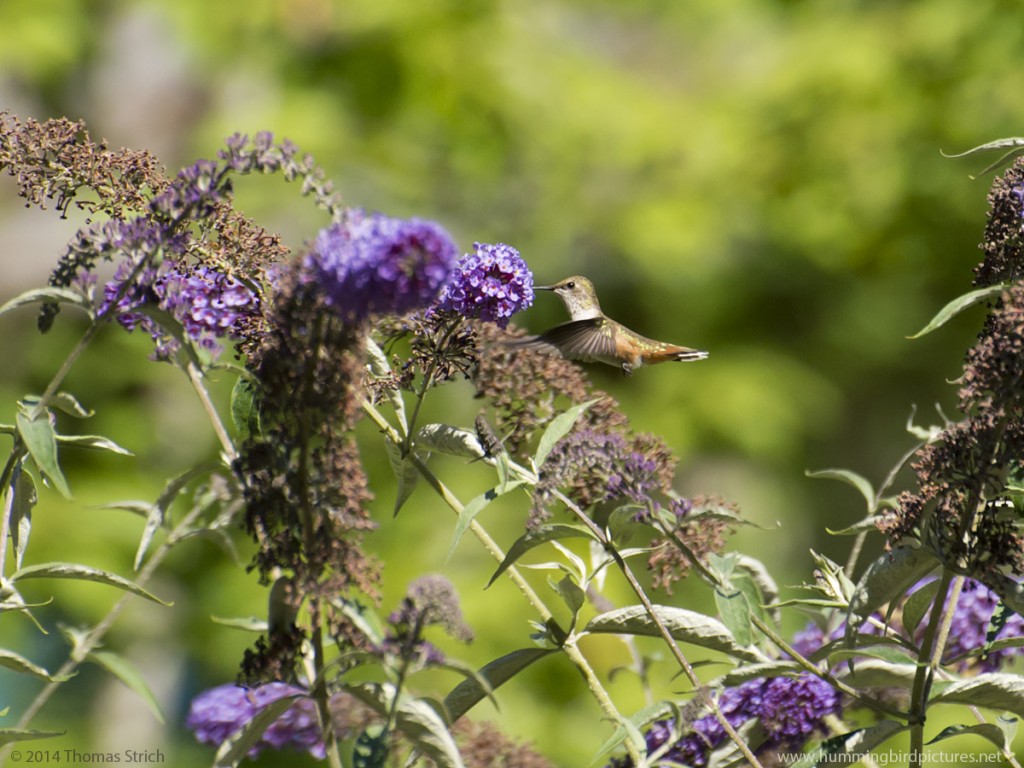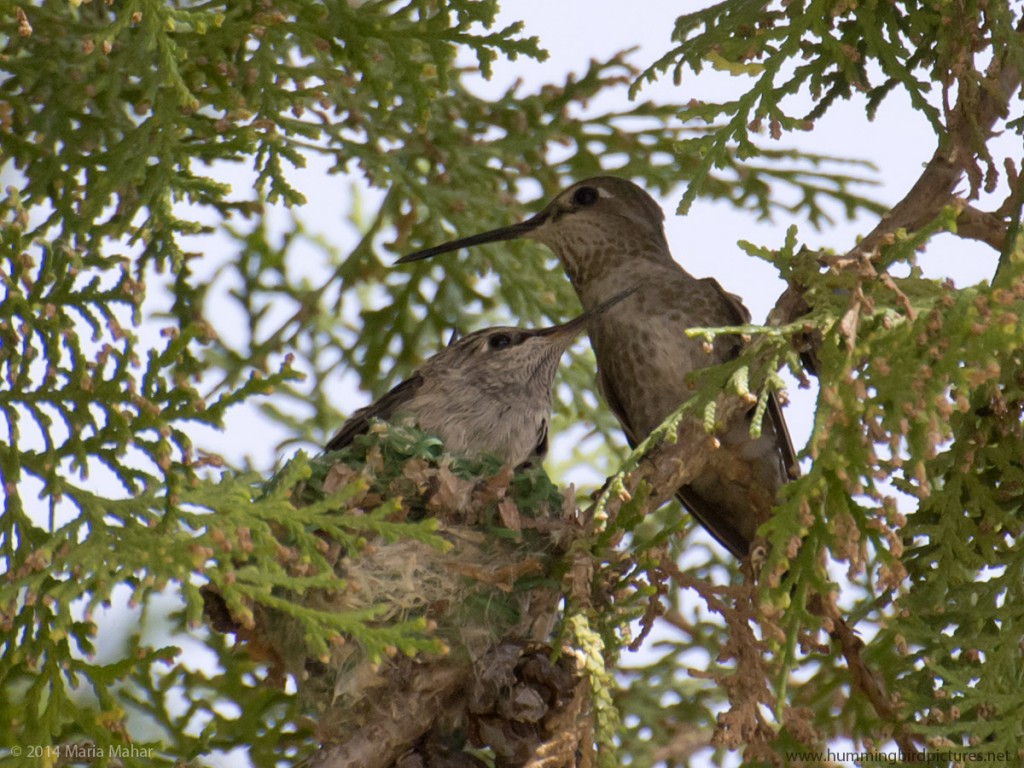Compared to things we handle everyday, just how small is a hummingbird nest? It is hard to tell, so I took photos of an empty hummingbird nest with small coins next to it for size comparison. Take a look at these pictures of one Anna’s Hummingbird nest, first with the baby in it, then later next to pennies (or cents) from the U.S., Canada, Great Britian and Europe.
Before – the hummingbird nest with one baby
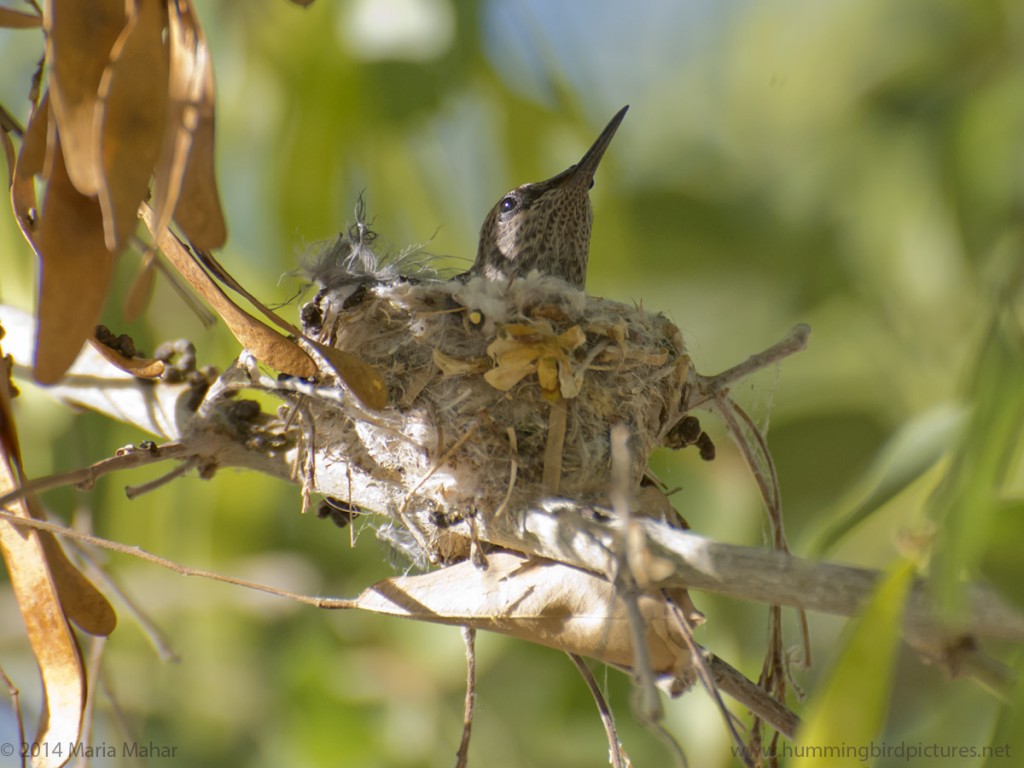
It was late in the season and getting hot by the time this baby hummingbird fledged. The mother hummingbird would not reuse the nest this year. The nest was in a low tree branch, about 6 to 7 feet (2 meters) off the ground. After the nest had been empty for about a week, I came back with step ladder, coins, and double-stick tape.
Hummingbird nest with coin – United States penny

Here is a U.S. penny next to the nest. The nest has dried and shrunken a little bit since it has been empty. But the penny’s size still shows how tiny the hummingbird nest is.
Hummingbird nest with coin – Canadian penny
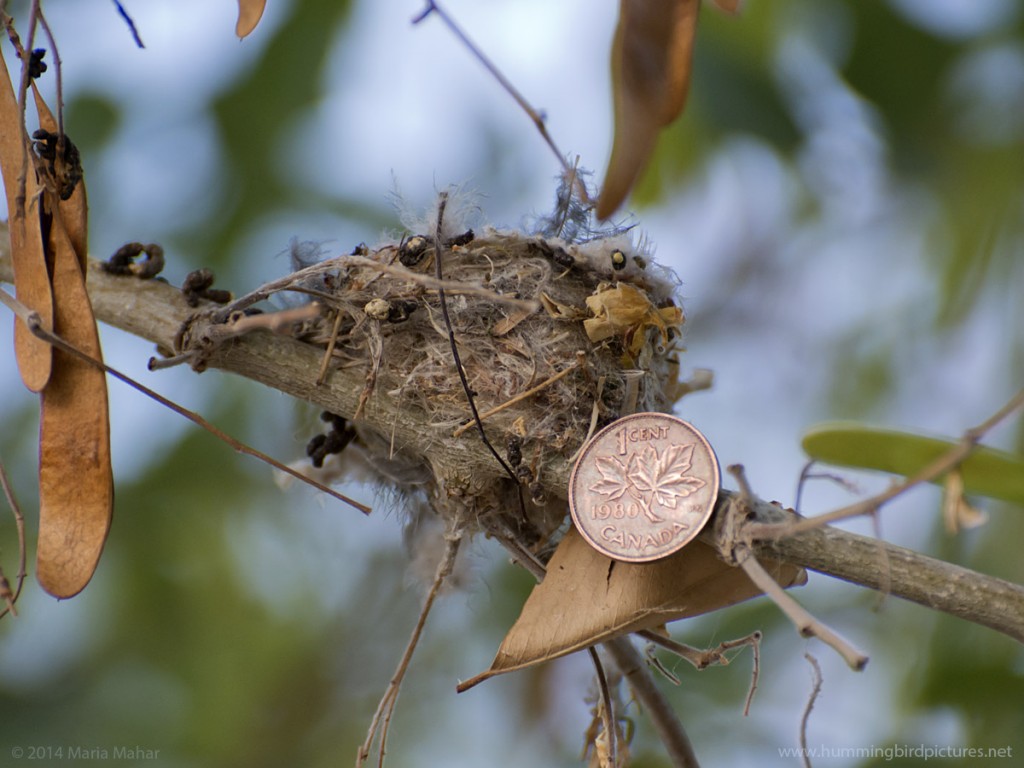
Here is the hummingbird nest compared to a Canadian penny. Anna’s Hummingbirds nest along the West coast of Canada.
Hummingbird nest with coin – British penny

Here it is compared to a British penny. This is for our British viewers – sorry no hummingbirds outside of the Americas.
Hummingbird nest with coin – Euro cent
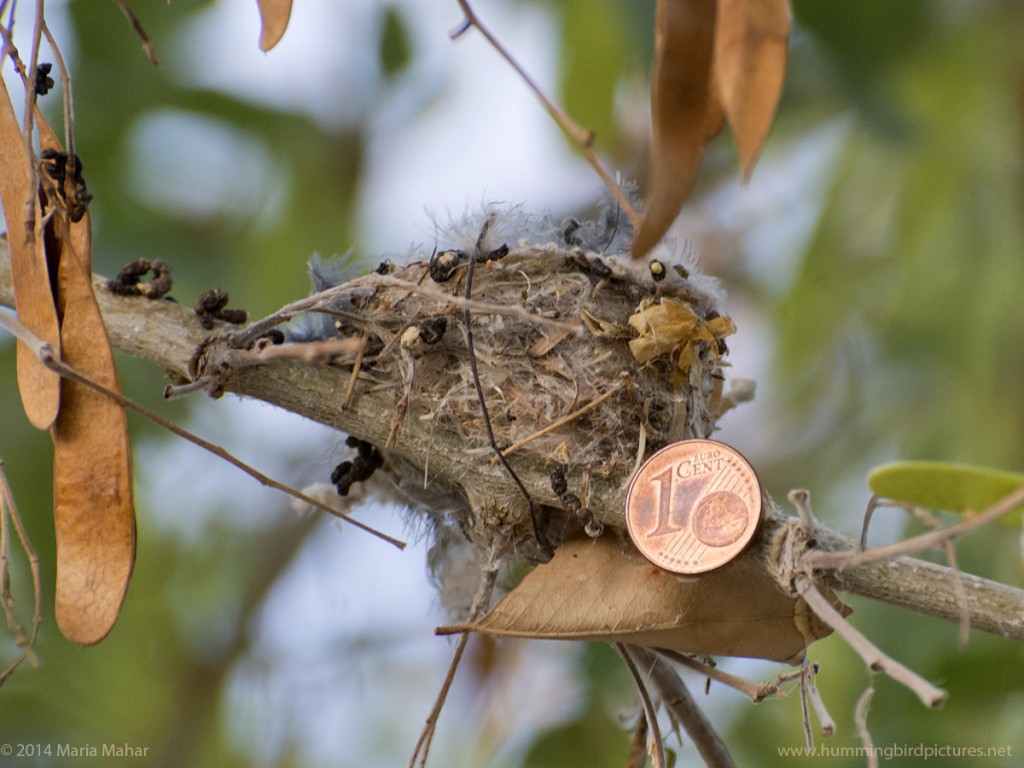
And a Euro cent coin. This is for our viewers across Europe. Again, no hummingbirds in Europe. Hummingbirds are only found in the Americas (with the majority in South and Central America).
Hummingbird nest with ruler

Here is a picture from above of another empty, well-used Anna’s Hummingbird nest. See the post on a different Anna’s Hummingbird nest over time for more photos of this nest. The nest measured less than 2 inches (~ 5 cm). Go here to see this nest with the tiny eggs in it.
Thanks for coming by. Check out some of our other picture posts, nesting posts, or return home.
